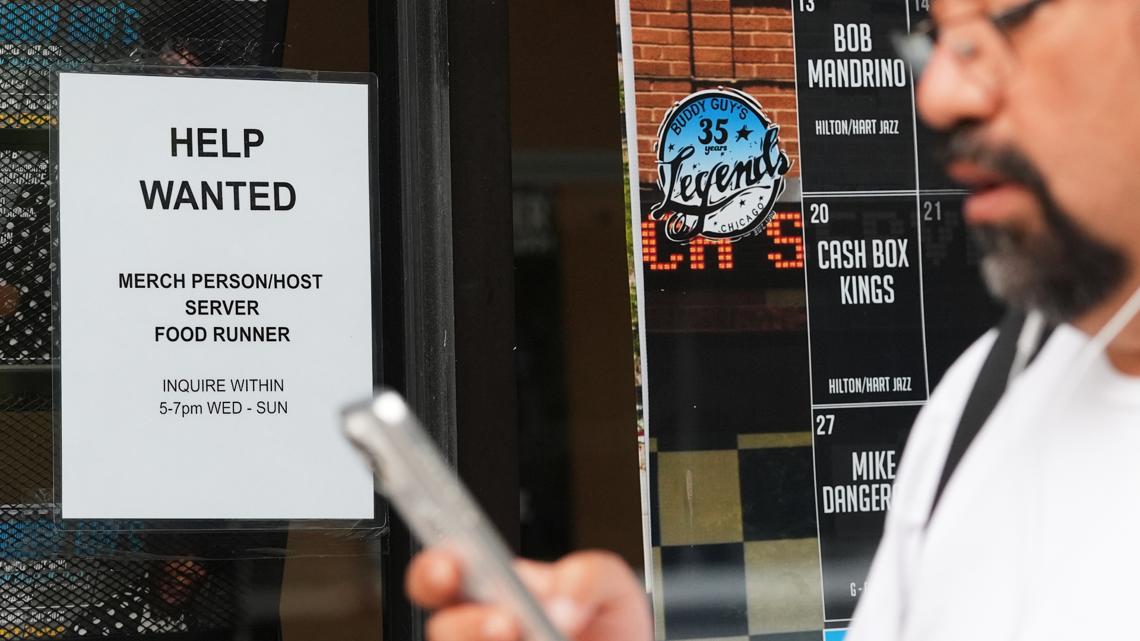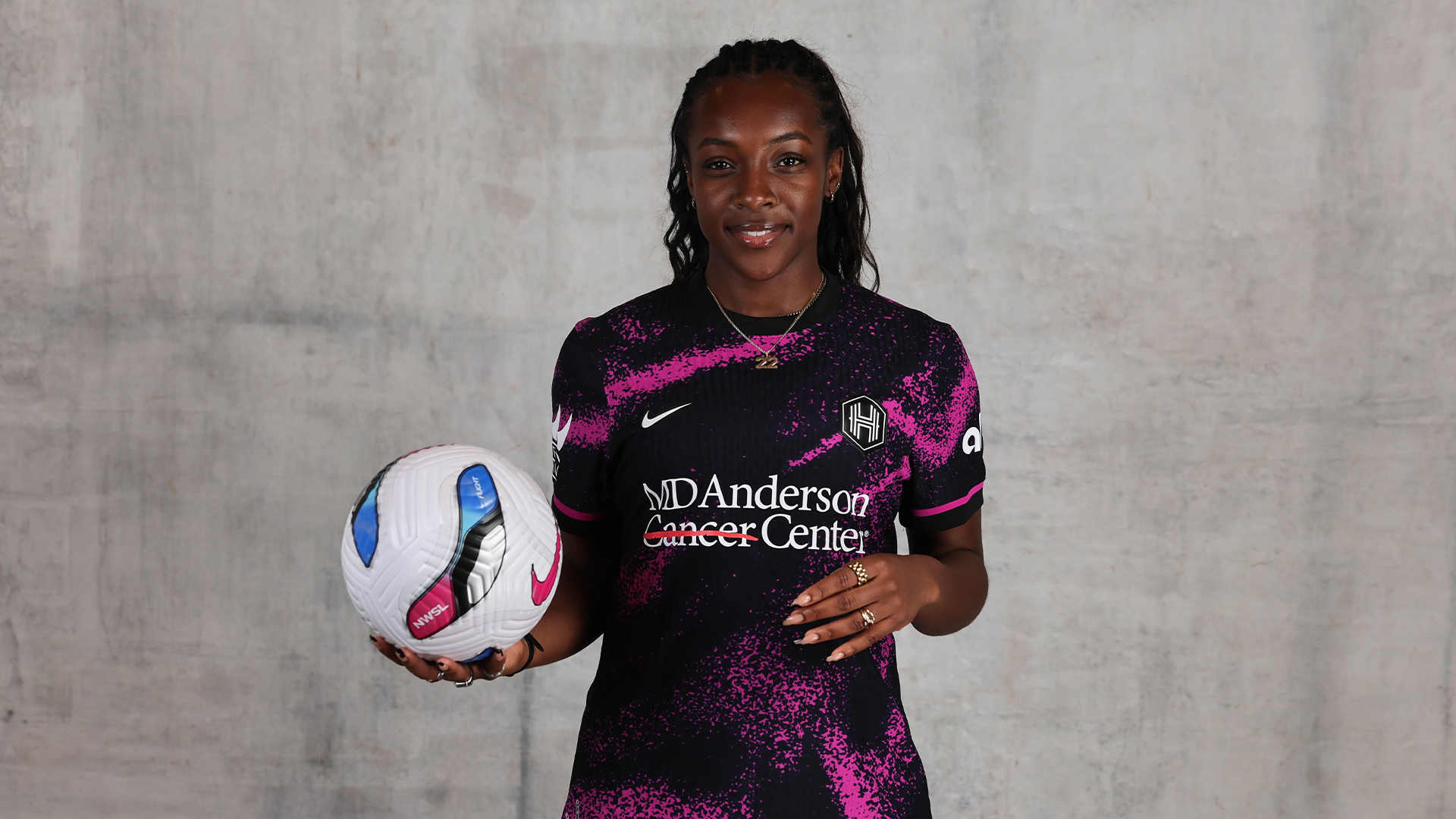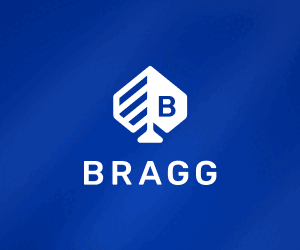Technology
The best fitness tracker for under $50
The Xiaomi Smart Band 10 doesn’t reinvent the wheel, but it makes meaningful upgrades where it counts, including added training tools and a slightly larger display. For budget-conscious buyers who want reliable tracking, a polished aesthetic, and up to 21 days of battery life, it’s a no-brainer. I’ve long tipped my hat to Xiaomi’s Smart […]


The Xiaomi Smart Band 10 doesn’t reinvent the wheel, but it makes meaningful upgrades where it counts, including added training tools and a slightly larger display. For budget-conscious buyers who want reliable tracking, a polished aesthetic, and up to 21 days of battery life, it’s a no-brainer.
I’ve long tipped my hat to Xiaomi’s Smart Band line (a.k.a. Mi Band in some regions), which nearly always punches above its weight. The latest device, the Xiaomi Smart Band 10, continues the reign as a leader in the budget fitness tracker space. The latest model also doubles down on style, adding polish to performance, and nudges the band even further into smartwatch-lite territory, all without messing with its core formula or pushing up the price tag. It’s not a revolutionary update, but with a global price tag of $49, it has definitely left me wondering about the exorbitant prices of other popular devices.
A familiar look with welcome refinement

Kaitlyn Cimino / Android Authority
Affordability doesn’t translate to a cheap aesthetic. Instead, the Smart Band lineup features a consistent design language: unobtrusive build, pill-shaped tracker, colorful display. This year, Xiaomi upgrades the experience with a noticeable display bump, measuring in at 1.72 inches, thanks to trimmed bezels that are now symmetrical all the way around the AMOLED screen. It’s sharp (326 PPI), bright (up to 1,500 nits), and as attractive as many of my top smartwatch displays. I found it big enough to read notifications at a glance and clue into my workout stats, but not so large that it loses its identity as a band-style tracker (rather than a watch).
One of the quickest ways to personalize any wearable is with a watch face, and here Xiaomi delivers more than 200 options ranging from classic to downright fun. I couldn’t love the dynamic Pet series more, as represented by the adorable otter trying to burst out of the screen in the image above. For the childish among us (me), the display is also the perfect size to dive into simple but fun mini-games built into some of the brand’s newest picks. I got a shameful amount of entertainment out of the Fighter watch face that lets you test the strength of your punch, like some kind of virtual carnival game.
Between the excessive watch face designs, the metal and ceramic frame options, and eleven different band styles, including a pearl-chain pendant, it’s also clear Xiaomi is all-in on the fashion-forward fitness tracking angle. I tested the white ceramic build and found it very sleek. It also rinsed off easily after a dusty trail run, which eased my fears about white holding up. I also really like the alternative magnetic band Xiaomi sent me, with subtle texture, elevated metal lugs, and a very comfortable fit.
The Xiaomi Smart Band 10 leans into the fashion-forward angle, with a ceramic option and a wide range of band materials.
The included fluororubber band is comfortable as well, but lining up the pin and hole closure isn’t seamless one-handed and it’s more sporty than upscale. There are plenty of other new band styles as well, ranging from leather to a pastel colorblocked one that’s giving Eras Tour, and a chain necklace for wearing the tracker around your neck. I’ve yet to get behind the necklace form-factor, and the product imagery reminds me of Hermione Granger’s Time-Turner, but the concept is unique for anyone who prefers a naked wrist (scandalous).
Consistent capabilities

Kaitlyn Cimino / Android Authority
As I’ve come to expect from this lineup, the Smart Band outperforms its price point. I can’t say there are a surprising number of fitness features, because the company consistently delivers a robust suite, but it’s still impressive year after year. In addition to basic activity tracking, the Smart Band 10 supports over 150 workout modes (matching the 9 Pro), with auto-detection for six, plus on-wrist running courses (or walking) which offer real-time pace and effort feedback.
The Xiaomi Smart Band 10 builds on the success of its predecessors with even more workout modes, plus enhanced training tools.
They’re not Garmin-level guided sessions, but they’re helpful for casual runners who want a bit more structure, and the Advanced Interval Run got me plenty sweaty. Meanwhile, metrics like VO₂ max, recovery time, and training state help contextualize users’ activity and fitness. For those who prefer clocking water-based laps rather than track ones, swim tracking received a notable upgrade with Xiaomi claiming up to 96% lap count accuracy.
For the first time, the tracker also offers heart rate broadcasting. I paired mine with a compatible cycling app, and it transmitted my live heart rate just like a chest strap would. That’s niche, perhaps, but useful for anyone training with intensity zones who’s already invested in using a favorite app or piece of exercise equipment. To that end, heart rate tracking on the Xiaomi Band 10 is decent, especially for such an affordable device. I tested the device against the Polar H10 chest strap, and it kept up fairly well, recording nearly identical average heart rates and staying within 5-8 beats (plenty good enough for basic activity tracking).

However, when I worked out with the magnetic band, the fit wasn’t as tight, and accuracy did seem to falter as a result. As you can see in the map above, there were a few times the Smart Band struggled to keep up with my chest strap, especially at peaks in my interval workout.
Unfortunately, we’re still left without built-in GPS.
Unfortunately, there’s still no onboard GPS tracking on the device, which holds it back compared to something like the Fitbit Charge line. Despite my hopes and dreams, Xiaomi seems to be saving outdoor workout tracking for its Pro models, so runners and cyclists might want to peek at the 10’s siblings before committing. Serious athletes aren’t likely to shop this device anyway, but built-in GPS would make it a more powerful option. With that said, it’s also roughly a third of the cost of Fitbit’s Charge 6, and leaving off GPS may be one way it retains such an approachable price tag.
Brains and battery

Kaitlyn Cimino / Android Authority
The Smart Band 10 packs in a thoughtful mix of features that, once again, make it feel more capable than its price tag might suggest. It offers all the basic tools I’d want on my wrist including alarms, calendar, weather, timers, and a flashlight, plus music and camera controls. It works with both Android phones and iPhones via the Mi Fitness app. On my Pixel 9, syncing was fast and reliable, but the experience is best if you’re already in the Xiaomi ecosystem. With support for the Xiaomi Smart Hub, you can use the band to control compatible smart home devices right from your wrist.
With the exception of NFC support, the Xiaomi Smart Band 10 offers a good range of basic smart features.
Even outside the Xiaomi bubble, though, the device still delivers a polished experience. Notifications, calls, and calendar alerts land instantly, and wrist-based music controls are helpful during a workout or grocery run. When I didn’t want distractions, I used the silent mode toggle and custom vibration patterns. My personal favorite is the “Good Day” alarm option, because who doesn’t want to start with a good day? I had hoped this would be the year NFC support finally made its way to the global model, but no luck. The longer digital payments exist and gain popularity, the more of a knock it seems for a device to not have it available.

Kaitlyn Cimino / Android Authority
What I absolutely love about the Xiaomi Smart Band line is the battery life. Compared to my usual go-to devices, the extended use between charges feels like a luxury. Despite the larger, brighter display and added features, the Smart Band 10 still offers up to 21 days on a typical charge, or about 9 days with the Always-on Display enabled. Charging is quick too, thanks to the magnetic charger that tops off the 233mAh battery in under an hour. Battery longevity has always been a Mi Band hallmark, and Xiaomi clearly isn’t ready to compromise on that front.
Xiaomi Smart Band 10 review verdict: Is it worth it?

Kaitlyn Cimino / Android Authority
While the Smart Band 10 isn’t a dramatic leap forward, it continues to refine what Xiaomi already does well, offering a more polished take on a familiar formula. At roughly $50, it is a very impressive little tracker. But, should you buy one? If you’re coming from a Mi Band 7 or earlier, the answer is a confident yes. You’ll get a more premium display, smarter health data, and a real boost in design and versatility. For existing Mi Band 9 users, it depends. If you care about heart rate broadcasting and swim tracking, it might be worth the upgrade.
For everyone else, especially first-time wearable buyers, the Xiaomi Smart Band 10 is easily the best budget fitness band available. It doesn’t try to be a full-blown smartwatch, but it nails the basics with style and longevity that even pricier options struggle to match.


Xiaomi Smart Band 10
MSRP: $49.90
Reliable, affordable fitness tracking.
The Xiaomi Smart Band 10 fitness tracker adds training tools and a slightly larger display. For budget-conscious buyers who want reliable tracking, a polished aesthetic, and up to 21 days of battery life, it’s a great pick.
Positives
- Incredible value for the price
- Larger, more vibrant display
- Loaded feature set
- Fantastic 21-day battery life
Cons
- Still missing NFC support globally
- Heart rate accuracy can vary by fit
- No built-in GPS
Technology
Tech job postings down 36% since 2020. But is AI a factor?
Entry-level tech jobs have been hit hardest, especially in areas overlapping with AI’s strengths. WASHINGTON — If you read the typical 2025 mass layoff notice from a tech industry CEO, you might think that artificial intelligence cost workers their jobs. The reality is more complicated, with companies trying to signal to Wall Street that they’re making […]

Entry-level tech jobs have been hit hardest, especially in areas overlapping with AI’s strengths.
WASHINGTON — If you read the typical 2025 mass layoff notice from a tech industry CEO, you might think that artificial intelligence cost workers their jobs.
The reality is more complicated, with companies trying to signal to Wall Street that they’re making themselves more efficient as they prepare for broader changes wrought by AI.
A new report Wednesday from career website Indeed says tech job postings in July were down 36% from their early 2020 levels, with AI one but not the most obvious factor in stalling a rebound.
ChatGPT’s debut in late 2022 also corresponded with the end of a pandemic-era hiring binge, making it hard to isolate AI’s role in the hiring doldrums that followed.
“We’re kind of in this period where the tech job market is weak, but other areas of the job market have also cooled at a similar pace,” said Brendon Bernard, an economist at the Indeed Hiring Lab. “Tech job postings have actually evolved pretty similarly to the rest of the economy, including relative to job postings where there really isn’t that much exposure to AI.”
The template for tech CEO layoff notices in 2025 includes an AI pivot
That nuance is not always clear from the last six months of tech layoff emails, which often include a nod to AI in addition to expressions of sympathy.
When he announced mass layoffs earlier this year, Workday CEO Carl Eschenbach invited employees to consider the bigger picture: “Companies everywhere are reimagining how work gets done, and the increasing demand for AI has the potential to drive a new era of growth for Workday.”
Autodesk CEO Andrew Anagnost explained that a need to shift resources to “accelerate investments” in AI was one of the reasons the company had to cut 1,350, or about 9%, of workers.
The “Why We’re Doing This” section of CrowdStrike CEO George Kurtz’s announcement of 5% job cuts said the cybersecurity company needed to double down on AI investments to “accelerate execution and efficiency.”
“AI flattens our hiring curve, and helps us innovate from idea to product faster,” Kurtz wrote.
It’s not just U.S. companies. In India, tech giant Tata Consultancy Services recently characterized its 12,000 layoffs, or 2% of its workforce, as part of a shift to a “Future-Ready organization” that would be realigning its workforce and “deploying AI at scale for our clients and ourselves.”
Even the Japanese parent company of Indeed and Glassdoor has cited an AI shift in its notice of 1,300 layoffs at the job search and workplace review sites.
AI spending, not replacement, is a more common factor
Microsoft, which is scheduled to release its fourth-quarter earnings Wednesday, has announced layoffs of about 15,000 workers this year even as its profits have soared.
Microsoft CEO Satya Nadella told employees last week the layoffs were “weighing heavily” on him but also positioned them as an opportunity to reimagine the company’s mission for an AI era.
Promises of a leaner approach have been welcomed on Wall Street, especially from tech giants that are trying to justify huge amounts of capital spending to pay for the data centers, chips and other components required to power AI technology.
“It’s this sort of double-edged sword restructuring that I think a lot of tech giants are encountering in this age of AI, where they have to find the right balance between maintaining an appropriate headcount, but also allowing artificial intelligence to come to the forefront,” said Bryan Hayes, a strategist at Zacks Investment Research.
Google said last week it would raise its budget for capital expenditures by an additional $10 billion to $85 billion. Microsoft is expected to outline similar guidance soon.
The role of AI in job replacement is hard to track
One thing is clear to Hayes: Microsoft’s job cuts improve its profit margin outlook for the 2026 fiscal year that started in July.
But what these broader tech industry layoffs mean for the employment prospects of tech workers can be harder to gauge.
“Will AI replace some of these jobs? Absolutely,” said Hayes. “But it’s also going to create a lot of jobs. Employees that are able to leverage artificial intelligence and help the companies innovate, and create new products and services, are going to be the ones that are in high demand.”
He pointed to Meta Platforms, the parent company of Facebook and Instagram, which is on a spree of offering lucrative packages to recruit elite AI scientists from competitors such as OpenAI.
The reports published by Indeed on Wednesday show that AI specialists are faring better than standard software engineers, but even those jobs are not where they have been.
“Machine-learning engineers — which is kind of the canonical AI job — those job postings are still noticeably above where they were pre-pandemic, though they’ve actually come down compared to their 2022 peak,” said Bernard, the Indeed economist. “They’ve also been impacted by the cyclical ups and downs of the sector.”
Economists are watching for AI’s effects on entry-level tech jobs
Tech hiring has particularly plunged in AI hubs such as the San Francisco Bay Area, as well as Boston and Seattle, according to Indeed.
But in looking more closely at which tech workers were least likely to get hired, Indeed found the deepest impact on entry-level jobs in the tech industry, with those with at least five years of experience faring better.
The hiring declines were sharpest in entry-level tech industry jobs that involve marketing, administrative assistance and human resources, which all involve tasks that overlap with the strength of the latest generative AI tools that can help create documents and images.
“The plunge in tech hiring started before the new AI age, but the shifting experience requirements is something that happened a bit more recently,” Bernard said.
Microsoft, which is staking its future on AI in the workplace, has also had its own researchers look into the jobs most vulnerable to the current strengths of AI technology. At the top of the list are knowledge work jobs such as language interpreters or translators, as well as historians, passenger attendants, sales representatives, writers and customer service representatives, according to Microsoft’s working paper.
On the other end, leading in work more immune to AI changes were phlebotomists, or healthcare workers who draw blood, followed by nursing assistants, workers who remove hazardous materials, painters and embalmers.
Copyright 2025 Associated Press. All rights reserved. This material may not be published, broadcast, rewritten, or redistributed.
Technology
GV Bets Big On ‘AI Magic’ — Even When It Competes With Alphabet
Editor’s note: This article is part of an ongoing series in which Crunchbase News interviews active investors in artificial intelligence. Read previous interviews with Felicis, Battery Ventures, Bain Capital Ventures, Menlo Ventures, Scale Venture Partners, Costanoa, Citi Ventures, Sierra Ventures and Andrew Ng of AI Fund, as well as highlights from more interviews done in […]

Editor’s note: This article is part of an ongoing series in which Crunchbase News interviews active investors in artificial intelligence. Read previous interviews with Felicis, Battery Ventures, Bain Capital Ventures, Menlo Ventures, Scale Venture Partners, Costanoa, Citi Ventures, Sierra Ventures and Andrew Ng of AI Fund, as well as highlights from more interviews done in 2023.
Most corporate venture firms steer clear of investing in rivals. But GV (formerly Google Ventures) isn’t most firms. Not only did it back Slack while Google had a competing product, it’s now investing in AI companies that go head-to-head with parent company Alphabet’s own efforts in the artificial intelligence race.

GV’s model — single LP, independent decisions — has allowed it to stay fast and nimble during AI’s most explosive moment. Managing partners Dave Munichiello and Tom Hulme are backing companies across chips, compilers and applications, and making early and late bets alike. GV’s wager is clear: The AI age rewards those who move fast, trust founders and don’t flinch at eye-watering valuations.
We recently spoke with Munichiello, based in Silicon Valley, and Hulme, based in London, who co-lead the digital investment practice globally, about GV’s AI investment approach.

Munichiello was previously at Kiva Systems, which became Amazon Robotics. Hulme has a background in physics and was the design director at Ideo in Europe and an active angel investor before joining then-Google Ventures in 2014.
A frenzied AI gold rush on the West
“It’s an absolutely wild time on the West Coast, in San Francisco. Every weekend is five or six long walks with founders that are getting inundated with AI term sheets,” said Munichiello. “Founders are in houses filled with other AI founders. The buzz is heavy of people getting poached by the Metas or the OpenAIs of the world, while simultaneously fending off those offers and starting their own thing,” he said.
Munichiello and Hulme said they both have middle- and high-school aged children who are using the technology in their everyday lives, to write, digest and summarize complex ideas.
From widespread consumer adoption, there is a drastic push from enterprises to spend to capture this “AI magic.”
Talent competition heats up
“We think about the stack as low as chips and infrastructure, and as high as the application level, and all the different industries that application-level investments are blossoming in,” said Munichiello.
Early GV investments in AI include Lattice Data, which was bought by Apple to power Siri in 2017, video-generation company Synthesia, and data labeling company Snorkel AI. More recently, it was an investor in Thinking Machines Lab’s record $2 billion seed round at a $12 billion valuation.
GV invests independently of Alphabet, its parent and sole investor. That means it sometimes backs companies that could be seen as competitors to Alphabet-owned products. For example, GV invested in Slack, when Google had a competitive internal product, and Thinking Machines Lab competes with Alphabet’s Gemini.
As to why they invested, Munichiello said they heard from their internal recruiting team that Thinking Machines CEO and co-founder Mira Murati, formerly OpenAI’s CTO, is one of the best recruiters of deeply technical AI talent. “Amazing companies sometimes are at prices that feel very uncomfortable, and that was certainly the case with Thinking Machines,” he added.
Competition for AI research talent is intense, and model performance is quantifiable. That means “for the first time, many of the big companies are competing in the same game. So if you look at Meta, Alphabet or OpenAI, they’re all competing on having cutting-edge foundation models,” Hulme said.
“We’ve never seen companies scale as quickly as the AI-native companies we see today,” he said. “We have not seen talent move as frequently at the foundation model as the amount we’re seeing at the moment.”
The team pays attention to where the smartest researchers are going to work. “They’re not going to Big Tech. They’re going to startups, and they’re all going to San Francisco,” said Munichiello.
App layer
“We’ve been slower to invest in application-layer companies, until we know there’s real traction,” said Munichiello. “If you look at Harvey or OpenEvidence, we didn’t lead the Series A. We led a later-stage round.”
Munichiello said the question they seek to address: “Are these dollars seeking a use case, seeking an application that could be interesting in their company? Or are they locked in production, creating actual value for the company?”
To assess whether revenue is experimental or not, the team spends time understanding customers’ use — is the product beyond proof of concept, is it used daily, does it save millions of dollars in headcount while creating actual value?
In 2024, the firm led the Series C in AI legal tech startup Harvey at a $1.5 billion valuation. The company has since raised two rounds and now has a valuation of $5 billion.
More recently, GV co-led, along with Kleiner Perkins, the Series B in OpenEvidence, an AI-powered platform that helps doctors and other healthcare professionals more easily aggregate and process peer-reviewed medical literature, at a $3.5 billion valuation.
GV also co-led a $40 million Series A investment with New York-based TQ Ventures in London-based online legal platform Lawhive.
“When we look at companies that are coming in to raise, the revenue run rate is insane. These companies are growing incredibly fast, faster than ever before,” said Munichiello. “And it’s very hard to spend a lot of time looking at AI applications companies, and then go back to looking at other companies.”
“We have businesses in our portfolio like Bolt.new [a product of StackBlitz] — they built out the technology and then turned on monetization and went from zero to $40 million ARR in 12 weeks,” said Hulme “We think that’s the new normal.” GV was a co-lead in the startup’s seed round in 2022. The company was not growing meaningfully until October 2024, when it launched bolt.new to code with text prompts in a web browser, which took off.
The invest strategy at the infrastructure level
For the infrastructure layer, the firm’s calculus is different, said Munichiello. “We start to do deep technical work, and see there needs to exist a compiler that is universal, and the company needs a lot of money to get there, and really patient capital. We’re going to lead the first round. We’ll probably lead multiple rounds over time, but this will pay off 100x over time if it’s right — that’s worth deep investment from us.”
To that end, GV led the $30 million seed round in Modular, which seeks to build a unified compute layer to interface with AI hardware. The company has created a universal compiler that is a competitor to Cuda, which enables AMD‘s GPUs to run just as fast as those from Nvidia, said Munichiello. Modular has since raised a $100 million Series B led by General Catalyst.
Multistage, multisector, multigeo investors
GV has been investing for 15 years and has $10 billion in assets under management. The firm is headquartered in Silicon Valley with offices in Cambridge, Massachusetts, New York and London. Its largest exits over time include Uber, Nest Labs, Slack and GitLab, among others.
CEO and managing partner David Krane heads up the team of 21 partners. Alongside Krane, Munichiello and Hulme, the fourth managing partner is Krishna Yeshwant, who is based in Cambridge, and co-leads its life sciences practice with general partner David Schenkein.
Companies meet at least one other partner through the investment process and then usually pitch the entire partnership. Partners share ideas and thoughts with the lead, who then can make an investment decision. The team can move quickly and has been able to close a deal in a week from the first meeting with a founder.
“A and B are the sweet spot,” said Munichiello. “Our job, when we find an area that we’re excited about, is to look at the A and the B. And then to say, ‘Is this the very best way to invest in this category?’”
If the right company is at Series D or seed, the team will do that investment. Team members are not limited by locale, and can invest in the best companies across the world.
Hulme thinks more in terms of cities than countries. “For every great founder you need great operators, maybe five or 10 great operators, and the global pockets of those remain, in my opinion, in San Francisco, New York and London. Those are the cities that we’re most excited about. But we also invest in places like Tel Aviv, which are growing quickly.”
An analog business
“We’re a venture capital business, but we think of this as a human capital business. We’re as good or as bad as the people on the GV team. And interestingly, they are as good or bad or as bad as the humans they’re investing in. It’s a very analog business in that way. It’s just super-powered with technology,” said Hulme.
Munichiello said the firm’s diverse approach and flexibility is key.
“GV is a place where we can have 30 people going in 30 different directions, investing in 30 different things. And we’re not trying to drive consensus,” said Munichiello.
Related Crunchbase list:
Illustration: Dom Guzman
Clarification: This story has changed since its original publication to update the firm’s life sciences practice information.

Stay up to date with recent funding rounds, acquisitions, and more with the
Crunchbase Daily.
Technology
Yale University Alum Michelle Alozie Juggles A Career In The National Women’s Soccer League While Working As A Cancer Research Technician
Houston Dash athlete Michelle Alozie is an inspiration. Higher Learning Journey The Nigerian is marrying her passion for sports with a career in medicine. As a former Yale University student, she obtained a bachelor’s degree in molecular, cellular, and developmental biology in 2019, according to her LinkedIn. She also played for the Ivy League’s soccer team, […]

Houston Dash athlete Michelle Alozie is an inspiration.
Higher Learning Journey
The Nigerian is marrying her passion for sports with a career in medicine. As a former Yale University student, she obtained a bachelor’s degree in molecular, cellular, and developmental biology in 2019, according to her LinkedIn. She also played for the Ivy League’s soccer team, Yale Bulldogs, scoring 19 goals and logging 13 assists across her three seasons, per information shared by the Houston Dash News. Her accolades on the team included Ivy League Co-Offensive Player of the Year honors and first-team All-Conference recognition. When she transitioned to the University of Tennessee to pursue a master’s degree in sports psychology and motor behavior, she played for one year with the Tennessee Volunteers, ESPN mentions.
Going Pro
In 2021, she signed on to join the Houston Dash (National Women’s Soccer League). According to the team website, Alozie was awarded a two-year contract extension beginning on Jan. 1, 2025.
“Houston will always hold a special place in my heart; this is where I began my professional career and earned so many opportunities to grow on-and-off the field,” Alozie said. “I’m optimistic about the future of the organization and want to contribute to this club’s success. I am cognizant of the work ahead and I’m thrilled to be a part of this team for years to come.”
Alozie recently played in the Women’s Africa Cup of Nations (WAFCON), representing Nigeria. According to the South African Broadcasting Corp., the team won its 10th title on July 26.
Simultaneously Working As A Cancer Research Technician
While Alozie spends most of her days on the field, she is working as a cancer research technician at Texas Children’s Hospital at night and between matches. She told the Olympics she hopes to inspire younger generations and show them that they do not have to choose one linear path.
“Many times you think you have to do one or the other, but if you’re passionate about both, you’re young and driven and you want to continue your football career, it doesn’t mean your academic career has to end. If anything, they can just co-exist and align with each other. It’s an inspiration to know that you can have more than one career,” she expressed.
Technology
Pakistan moves to draft first esports policy to boost digital economy
ISLAMABAD: Pakistan has taken a step towards formalising its growing esports industry, as government officials and international partners agreed to develop the country’s first national esports policy. The decision followed a high-level meeting between the Ministry of Information Technology and Telecommunication (MoITT), the Commonwealth Secretariat, and the British Esports Federation. The goal is to craft […]

ISLAMABAD: Pakistan has taken a step towards formalising its growing esports industry, as government officials and international partners agreed to develop the country’s first national esports policy.
The decision followed a high-level meeting between the Ministry of Information Technology and Telecommunication (MoITT), the Commonwealth Secretariat, and the British Esports Federation. The goal is to craft a policy that supports economic growth, creates job opportunities for young people, and aligns with global standards.
Federal Minister for IT and Telecommunication, Shaza Fatima Khawaja, who chaired the meeting, said the policy aims to turn Pakistan’s emerging game development talent into a competitive global force. “Our youth are already creating games for platforms like SEGA and Nintendo,” she said. “What we lack is commercial access. We need international support to bridge this gap and help our developers scale up.”
The government is proposing a three-pronged strategy: introducing game-tech education and training, supporting youth-led innovation, and promoting the commercialisation of locally developed games.
The meeting also included Chairman of the Prime Minister’s Youth Programme (PMYP), Rana Mashood Ahmed Khan, who called the move a “strategic push” to unlock digital employment potential. “This is a great opportunity to collaborate on game technology and create new economic pathways for our young population,” he said.
Representatives from both the Commonwealth Secretariat and British Esports Federation pledged their support. Layne Robinson, Head of Social Policy, Youth and Gender Development at the Commonwealth, and British Esports Vice President Thomas Dore, were among those present.
The parties agreed to move forward with the creation of a national esports federation and a policy framework that reflects international best practices.
The initiative is seen as part of Pakistan’s wider digital transformation agenda and an attempt to tap into the fast-growing global gaming industry.
Read next: Pakistan’s Systems to acquire British American Tobacco SAA Services
Technology
Apple iSports to acquire Lucky Bet operator LBC Enterprises
Entertainment technology company Apple iSports Group has agreed to acquire Australia-based gaming and fintech platform provider LBC Enterprises, operator of the Lucky Bet brand. According to Apple iSports’ website, the company “delivers advanced infrastructure and immersive sports and gaming platforms — powered by strategic tech partnerships. The business says it is “strategically positioned at the […]

Entertainment technology company Apple iSports Group has agreed to acquire Australia-based gaming and fintech platform provider LBC Enterprises, operator of the Lucky Bet brand.


According to Apple iSports’ website, the company “delivers advanced infrastructure and immersive sports and gaming platforms — powered by strategic tech partnerships.
The business says it is “strategically positioned at the intersection of technology, media, and entertainment — where sports and entertainment are rapidly converging,” and is “tackling today’s digital infrastructure gaps with focused, strategic acquisitions.”
Apple iSports was founded by Australia-based entrepreneur Marino Sussich, and is led by Joe Martinez as chairman and CEO.
Martinez is described by the company as “a key contributor to multiple companies’ funding and IPOs”, who has “served as CEO of several public companies, leading them from startup through management, public offering, and successful sale to private equity firms.”
Apple iSports’ management team is further bolstered by technology veteran Jeremy Samuel as president and director, and seasoned online betting expert Lee Saltzer as COO.
LBC management to remain in place
Meanwhile, Lucky Bet operator LBC Enterprises is led by CEO Ian Parke, who will continue to run the business post-acquistion.
Both Parke and James Tennant will join the board of Apple iSports as directors following completion of the deal, which is expected to close during Q3.
“The proposed acquisition of our company by Apple iSports validates the global opportunity we see in regulated, tech-driven gaming,” Parke commented on the agreement.
“By combining LBC’s platform and operational expertise with Apple iSports’ capital markets presence and distribution network, we are primed to accelerate our expansion into new markets and scale our white label programme. This partnership represents a major step forward for Lucky Bet and the broader LBC ecosystem.”
Apple iSports CEO Martinez added: “The board of directors is excited to continue rolling out our stated objectives with our proposed acquisition of LBC. Our service offerings to B2B and B2C will now be significantly enhanced in a rapidly growing sector.
“Combined with our exceptional team, this transaction catapults us into the US and international gaming markets.”
Media reports suggest the deal is valued at $125m.
Technology
High-impact STI stakeholders meet held at SKUAST-K to boost innovation in J&K
In a significant stride towards advancing the science, technology, and innovation (STI) landscape in Jammu & Kashmir, a high-impact Stakeholders Meet was successfully held today at SKUAST-Kashmir, Shalimar. The event was organized by the Northern Region S&T Cluster – PI-RAHI (PU-IIT Ropar Regional Accelerator for Holistic Innovations Foundation) in collaboration with J&K Science & Technology […]

In a significant stride towards advancing the science, technology, and innovation (STI) landscape in Jammu & Kashmir, a high-impact Stakeholders Meet was successfully held today at SKUAST-Kashmir, Shalimar. The event was organized by the Northern Region S&T Cluster – PI-RAHI (PU-IIT Ropar Regional Accelerator for Holistic Innovations Foundation) in collaboration with J&K Science & Technology Council, SKUAST Kashmir and IIT Jammu.
The meeting witnessed the presence of eminent dignitaries, government representatives, academic leaders, and innovators from across the region. The Hon’ble Minister for Science & Technology, IT, Youth Services & Sports, and ARI & Trainings, Shri Satish Sharma, graced the occasion as the Chief Guest, while Dr. Shahid Choudary, Scientific Secretary, Office of the Principal Scientific Adviser to the Government of India, joined as the Guest of Honor. Four startups incubated and mentored at SKUAST Kashmir’s SKIEE Center were also launched during the event
In his address, Shri Sharma highlighted the region’s potential to emerge as a hub of innovation and technological excellence and praised the efforts of PI Rahi and SKUAST Kashmir in this direction.
The event commenced with a welcome address by Dr. Nasir Shah, Additional Director, J&K S&T Council, followed by addresses from Ms. Neha Arora, COO, PI-RAHI, and Dr. Jatinder Kaur Arora, Advisor, PI-RAHI, who shared the vision and scope of the regional innovation cluster.
Addressing the gathering, Prof. Nazir Ahmad Ganai, Vice Chancellor, SKUAST-Kashmir, emphasized the critical role of research institutions in nurturing innovations and ensuring technology reach for the farming community and highlighted the role that SKUAST Kashmir is playing in this direction. Dr. Shahid Iqbal Choudhary, Secretary to Government, S&T Department also delivered insightful addresses outlining the state’s commitment to research-led development. The core of the program featured roundtable discussions on key thematic challenges such as tech interventions in rural livelihoods, grassroots innovation, scaling up R&D outputs, and strengthening incubator networks. Dr Ambreen Hamadani, Asst Professor, CAIML conducted the proceedings.
The discussions concluded with concrete recommendations to integrate STI advancements with local developmental needs, enable pilot deployment of field-ready technologies, and establish national linkages for grassroots innovations from J&K. The event concluded with a vote of thanks by Prof Rohitashaw Kumar, Associate Dean COAET, SKUAST Kashmir and a resolve to take the deliberations forward through coordinated action. Participants appreciated the collaborative spirit of the meet and the strategic support from PI-RAHI and partnering institutions.
-

 Fashion2 weeks ago
Fashion2 weeks agoEA Sports College Football 26 review – They got us in the first half, not gonna lie
-

 Health2 weeks ago
Health2 weeks agoCAREGD Trademark Hits the Streets for Mental Health Month
-

 Sports2 weeks ago
Sports2 weeks agoVolleyball Releases 2025 Schedule – Niagara University Athletics
-

 Sports2 weeks ago
Sports2 weeks agoNew NCAA historical database provides wealth of information on championships
-

 Sports2 weeks ago
Sports2 weeks agoAdapti, Inc. (OTC
-

 College Sports3 weeks ago
College Sports3 weeks agoBuford DB Tyriq Green Commits to Georgia
-

 High School Sports6 days ago
High School Sports6 days ago100 days to men's college basketball
-

 Rec Sports2 weeks ago
Rec Sports2 weeks agoFlorida woman, 20, accused of pepper-spraying rich men in Miami Beach hotels, stealing their luxury watches
-

 Youtube3 weeks ago
Youtube3 weeks agoThe Twins squeeze out a walk-off win 👀
-

 Youtube2 weeks ago
Youtube2 weeks agoHawaii TOP SPORTS MOMENTS! 🏈⚾ | SportsCenter





























